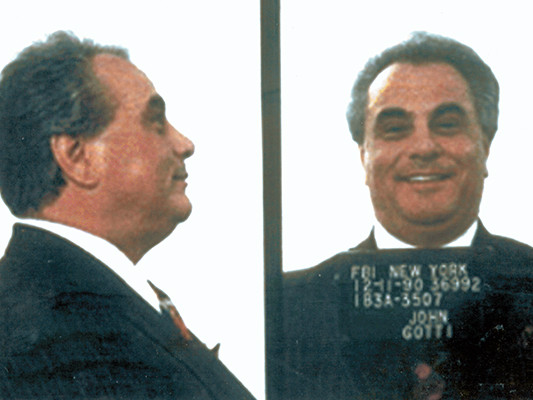The question “Is John Gotti Still Alive?” is a common one, reflecting the enduring notoriety of the infamous Gambino crime family boss. To put it directly, no, John Gotti is not still alive. He died on June 10, 2002, while incarcerated at a federal prison hospital in Springfield, Missouri. However, to simply state his death is to overlook the captivating and controversial life of a man who commanded headlines and captivated public imagination for decades.
Who Was John Gotti? The Rise of the Dapper Don
Born on October 27, 1940, in the Bronx, New York, John Gotti, also known as “The Dapper Don” and “The Teflon Don,” ascended to the pinnacle of organized crime as the head of the Gambino crime family. This family, one of the original “Five Families” of New York’s Mafia, held immense power and profitability for generations. Gotti’s associates included not only the Gambino Family but also the broader network of the Five Families and the Commission, the governing body of the American Mafia. His name became synonymous with mob rule, violence, and a brazen defiance of the law.
 John Gotti, also known as The Dapper Don and The Teflon Don, was the boss of the Gambino crime family.
John Gotti, also known as The Dapper Don and The Teflon Don, was the boss of the Gambino crime family.
A Ruthless Climb to Power: Murder and Mafia Hierarchy
Gotti’s rise to power was characterized by the brutal realities of Mafia life. He seized control of the Gambino family through the assassination of his predecessor, Paul Castellano, in 1985. This act, while shocking, was in line with a grim tradition within the Mafia. Castellano himself had assumed leadership in 1975 after Carlo Gambino, through similar methods, removed Albert Anastasia in 1957. Anastasia had become boss after Vincent Mangano’s presumed murder in 1951. This violent lineage highlights the ruthless nature of power transitions within these crime syndicates. Gotti’s move, however, was particularly audacious and initially lacked the sanction of the other crime families, creating tension within the Mafia world.
The Teflon Don Persona: Beating the Law, For a Time
Adding to his infamy was Gotti’s carefully cultivated public image. He was dubbed “The Teflon Don” by the media because of his uncanny ability to evade convictions in several high-profile trials during the 1980s. Despite facing charges for assault and racketeering, Gotti walked free, seemingly untouchable. This Teflon image was, to some extent, a media construct. Gotti was not a stranger to prison; he had served time for theft and truck hijacking in the late 1960s and had a juvenile record. His acquittals were later revealed to be the result of jury tampering and witness intimidation, tactics that underscored the deep corruption associated with his reign.
The Fall of the Teflon Don: Evidence and Betrayal
The facade of invincibility began to crumble in the late 1980s and early 1990s. While law enforcement chipped away at Gotti’s organization by successfully prosecuting his associates, they were also meticulously building a case against the boss himself. A pivotal moment came in 1990 when the FBI raided the Ravenite Social Club, a known Gotti hangout that had been bugged for years. Among those arrested was Gotti’s trusted lieutenant, Sammy “The Bull” Gravano.
The evidence amassed against Gotti was substantial, including incriminating wiretaps from the Ravenite Social Club. These tapes not only implicated Gotti in racketeering and five murders, including Castellano’s, but also captured him making disparaging remarks about Gravano. Disillusioned and facing his own charges, Gravano made a momentous decision: he turned government witness. Gravano’s testimony in the 1992 trial was devastating. He detailed Gotti’s leadership of the Gambino family and his direct orders for murders. This time, Gotti’s usual tactics of witness and jury manipulation failed. He was convicted and sentenced to life in prison. The “Teflon Don” became the “Velcro Don,” as the FBI quipped, finally stuck to the charges against him.
Death Behind Bars and the Gotti Legacy
In 1998, John Gotti was diagnosed with cancer. Despite treatment, the cancer returned, and he ultimately died in prison on June 10, 2002. His death marked the end of an era for the Gambino family, although his legacy continued through his sons. John Gotti III followed in his father’s footsteps, becoming involved in criminal activities and facing racketeering charges. His brother, Peter Gotti, briefly took over the Gambino family leadership in 2002 but was quickly arrested and convicted of racketeering himself.
While John Gotti is no longer alive, his story remains a chilling reminder of the allure and destructiveness of organized crime. His flamboyant persona and dramatic downfall continue to fascinate those interested in the dark underbelly of American society and the ongoing battle against Mafia influence.
